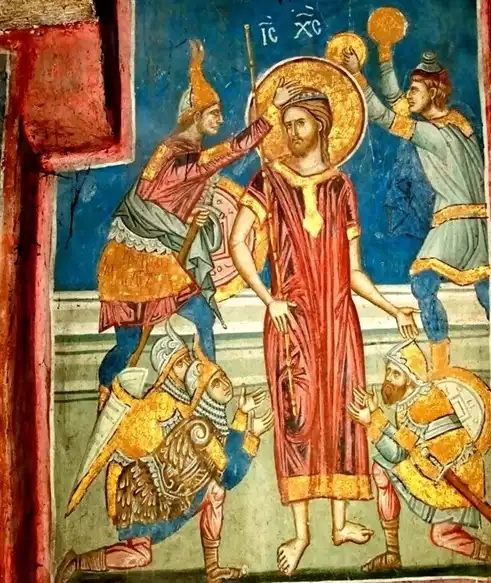
Navigating Faith and Modernity
The Eastern Orthodox Patriarchate of Serbia, a pivotal ecclesiastical institution, stands as a testament to the enduring legacy of Eastern Orthodox Christianity in the Balkans. Originating in the medieval era, this religious body has played a significant role in shaping the spiritual, cultural, and social landscape of Serbia. The Patriarchate, with its seat in Belgrade, oversees numerous dioceses, each shepherded by bishops who ensure adherence to the Orthodox faith and traditions. Historically, the Patriarchate’s emergence was closely tied to the rise of the Serbian state, intertwining religion and national identity. This union was instrumental during periods of foreign domination and socio-political upheaval, providing a sense of continuity and resilience to the Serbian people.
Throughout its history, the Patriarchate has encountered various challenges, including periods of suppression and resurgence, particularly during Ottoman rule and later under Communist Yugoslavia. Despite these trials, it has remained a cornerstone of Serbian identity and spiritual life. The Patriarchate’s leadership, epitomized by the Patriarch of Serbia, is pivotal in guiding the faithful, not just in liturgical matters but also in ethical and social issues. Its theological stance, rooted in the Byzantine tradition, emphasizes the mystical and sacramental aspects of Christianity, fostering a deep sense of communal worship and spiritual introspection among its adherents.
The Patriarchate’s administrative structure is both hierarchical and conciliar, balancing authority with collective decision-making, a reflection of Orthodox ecclesiology. This structure has enabled it to navigate the complexities of modernity while retaining its traditional ethos. The Patriarchate’s role in education and charity is noteworthy, with numerous educational institutions and philanthropic initiatives under its auspices. These efforts underscore its commitment to the spiritual and material wellbeing of the Orthodox faithful and the wider community.
Moreover, the Eastern Orthodox Patriarchate of Serbia plays a significant role in ecumenical dialogue, engaging with other Christian denominations and faiths to foster understanding and cooperation. This openness reflects its awareness of the globalized context in which it operates, seeking to be a beacon of Orthodox Christianity while embracing the challenges and opportunities of the contemporary world. The Patriarchate, thus, not only serves as a spiritual guide but also as a cultural and moral compass, deeply embedded in the fabric of Serbian society and the broader Orthodox Christian world.
Theological Influence and Modern Challenges
The Eastern Orthodox Patriarchate of Serbia’s theological influence extends far beyond its historical and cultural impact, shaping the spiritual discourse within the Orthodox world. Its theological teachings, deeply rooted in the Patristic tradition, emphasize the transformative power of divine grace, the importance of liturgical life, and the pursuit of personal holiness. These teachings resonate not only within the confines of the Serbian Orthodox Church but also across the global Orthodox Christian community. In recent times, the Patriarchate has faced modern challenges, including secularization, globalization, and evolving societal values. These challenges necessitate a delicate balancing act: maintaining the integrity of Orthodox theology while engaging constructively with contemporary issues. The Patriarchate’s response to these challenges is multifaceted, involving theological dialogue, pastoral care, and social engagement. Its approach reflects a deep understanding of the need to remain relevant in an ever-changing world without compromising its core theological principles.
Moreover, the Patriarchate actively participates in interfaith dialogues and promotes religious tolerance, recognizing the importance of peaceful coexistence in a religiously diverse society. Its efforts in this regard have contributed to fostering a more inclusive and harmonious social environment in Serbia and the Balkan region. As the Eastern Orthodox Patriarchate of Serbia navigates the complexities of the 21st century, it continues to be a beacon of faith, tradition, and hope for its faithful, affirming its role as a custodian of Eastern Orthodoxy’s rich theological heritage.
References
- Fotić, Aleksandar. “Encyclopedia of the Ottoman Empire.” Infobase Publishing, 2009.
- Janićijević, Jovan. “The Cultural Treasury of Serbia.” IDEA, 1998.
- Pavlovich, Paul. The History of the Serbian Orthodox Church.” Serbian Heritage Books, 1989.
- Perović, Ljubica. “Orthodoxy and Nationalism in the Serbian Church.” Nationalities Papers, vol. 37, no. 2, 2009.
- Radić, Radmila. The Serbian Orthodox Church in the History of Serbia in the 20th Century.” Balkanološki Institut, 2007.
